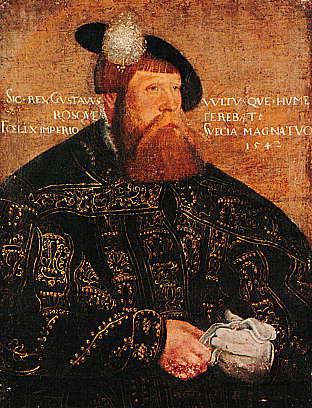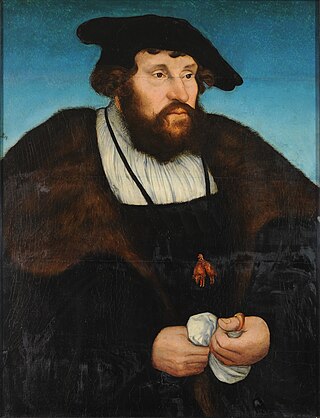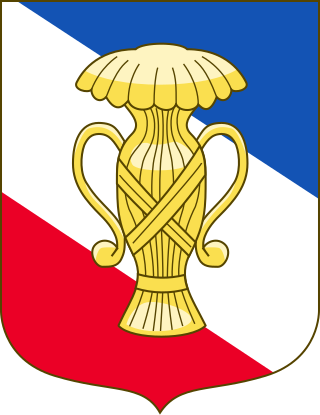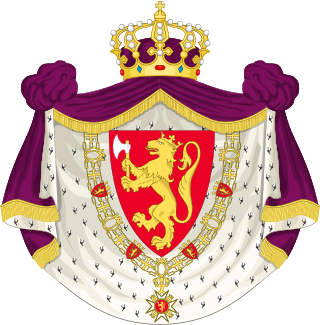
Gustav I, commonly known as Gustav Vasa, was King of Sweden from 1523 until his death in 1560, previously self-recognised Protector of the Realm (Riksföreståndare) from 1521, during the ongoing Swedish War of Liberation against King Christian II of Denmark, Norway and Sweden. Gustav rose to lead the Swedish War of Liberation following the Stockholm Bloodbath, where his father was executed. Gustav's election as king on 6 June 1523 and his triumphant entry into Stockholm eleven days later marked Sweden's final secession from the Kalmar Union.

Charles IX, also Carl, reigned as King of Sweden from 1604 until his death. He was the youngest son of King Gustav I and of his second wife, Margaret Leijonhufvud, the brother of King Eric XIV and of King John III, and the uncle of Sigismund, who became king both of Sweden and of Poland. By his father's will Charles received, by way of appanage, the Duchy of Södermanland, which included the provinces of Närke and Värmland; but he did not come into actual possession of them till after the fall of Eric and the succession to the throne of John in 1569.

Gustav IV Adolf or Gustav IV Adolph was King of Sweden from 1792 until he was deposed in a coup in 1809. He was also the last Swedish monarch to be the ruler of Finland.

Charles XIII, or Carl XIII, was King of Sweden from 1809 and King of Norway from 1814 to his death. He was the second son of King Adolf Frederick of Sweden and Louisa Ulrika of Prussia, sister of Frederick the Great.

Adolf Frederick, or Adolph Frederick was King of Sweden from 1751 until his death in 1771. He was the son of Christian August of Holstein-Gottorp, Prince of Eutin, and Albertina Frederica of Baden-Durlach. He was an uncle of Catherine the Great and husband to Louisa Ulrika of Prussia.

Christian II was a Scandinavian monarch under the Kalmar Union who reigned as King of Denmark and Norway, from 1513 until 1523, and Sweden from 1520 until 1521. From 1513 to 1523, he was concurrently Duke of Schleswig and Holstein in joint rule with his uncle Frederick.

Christian V was King of Denmark and Norway from 1670 until his death in 1699.

The House of Bernadotte is the royal family of Sweden, founded there in 1818 by King Charles XIV John of Sweden. It was also the royal family of Norway between 1818 and 1905. Its founder was born in Pau in southern France as Jean Bernadotte. Bernadotte, who had been made a General of Division and Minister of War for his service in the French Army during the French Revolution, and Marshal of the French Empire and Prince of Ponte Corvo under Napoleon, was adopted by the elderly King Charles XIII of Sweden, who had no other heir and whose Holstein-Gottorp branch of the House of Oldenburg thus was soon to be extinct on the Swedish throne. The current king of Sweden, Carl XVI Gustaf, is a direct descendant of Charles XIV John.

The monarchy of Sweden is centred on the monarchical head of state of Sweden, by law a constitutional and hereditary monarchy with a parliamentary system. There have been kings in what now is the Kingdom of Sweden for more than a millennium. Originally an elective monarchy, it became a hereditary monarchy in the 16th century during the reign of Gustav Vasa, though virtually all monarchs before that belonged to a limited and small number of political families which are considered to be the royal dynasties of Sweden.

Frederick I was King of Denmark and Norway. He was the last Catholic monarch to reign over Denmark and Norway, when subsequent monarchs embraced Lutheranism after the Protestant Reformation. As king of Norway, Frederick is most remarkable in never having visited the country and was never crowned as such. Therefore, he was styled King of Denmark, the Vends and the Goths, elected King of Norway. Frederick's reign began the enduring tradition of calling kings of Denmark alternatively by the names Christian and Frederick.

The House of Vasa or Wasa was an early modern royal house founded in 1523 in Sweden. Its members ruled the Kingdom of Sweden from 1523 to 1654 and the Polish–Lithuanian Commonwealth from 1587 to 1668; its agnatic line became extinct with the death of King John II Casimir of Poland in 1672.
An heir apparent or simply heir is a person who is first in an order of succession and cannot be displaced from inheriting by the birth of another person. A person who is first in the current order of succession but could be displaced by the birth of a more eligible heir is known as heir presumptive.
An elective monarchy is a monarchy ruled by a monarch who is elected, in contrast to a hereditary monarchy in which the office is automatically passed down as a family inheritance. The manner of election, the nature of candidate qualifications, and the electors vary from case to case. Historically, it was common for elective monarchies to transform into hereditary ones over time or for hereditary ones to acquire at least occasional elective aspects.
Regnal numbers are ordinal numbers used to distinguish among persons with the same name who held the same office. Most importantly, they are used to distinguish monarchs. An ordinal is the number placed after a monarch's regnal name to differentiate between a number of kings, queens or princes reigning the same territory with the same regnal name.

Louisa Ulrika of Prussia was Queen of Sweden from 1751 to 1771 as the wife of King Adolf Frederick. She was queen mother during the reign of King Gustav III.
The Kingdom of Norway as a unified realm dates to the reign of King Harald I Fairhair in the 9th century. His efforts in unifying the petty kingdoms of Norway resulted in the first known Norwegian central government. The country, however, soon fragmented and was collected into one entity in the first half of the 11th century, and Norway has retained a monarchy since that time. Traditionally, it has been viewed as being ruled by the Fairhair dynasty, though modern scholars question whether the eleventh century kings and their successors were truly descendants of Harald.

The Norwegian monarch is the head of state of Norway, which is a constitutional and hereditary monarchy with a parliamentary system. The Norwegian monarchy can trace its line back to the reign of Harald Fairhair and the previous petty kingdoms which were united to form Norway; it has been in unions with both Sweden and Denmark for long periods.
The Royal mottos of the Norwegian monarchs are an old tradition of Norway, permanent since the reign of Christian II of Denmark and Norway. The latest three kings have adopted the same motto as their personal motto, Alt for Norge, that has a particularly high standing as it became one of the main symbols of the Norwegian struggle during the German occupation in World War II.

The monarchy of Denmark is a constitutional institution and a historic office of the Kingdom of Denmark. The Kingdom includes Denmark proper and the autonomous territories of the Faroe Islands and Greenland. The Kingdom of Denmark was already consolidated in the 8th century, whose rulers are consistently referred to in Frankish sources as "kings". Under the rule of King Gudfred in 804 the Kingdom may have included all the major provinces of medieval Denmark.